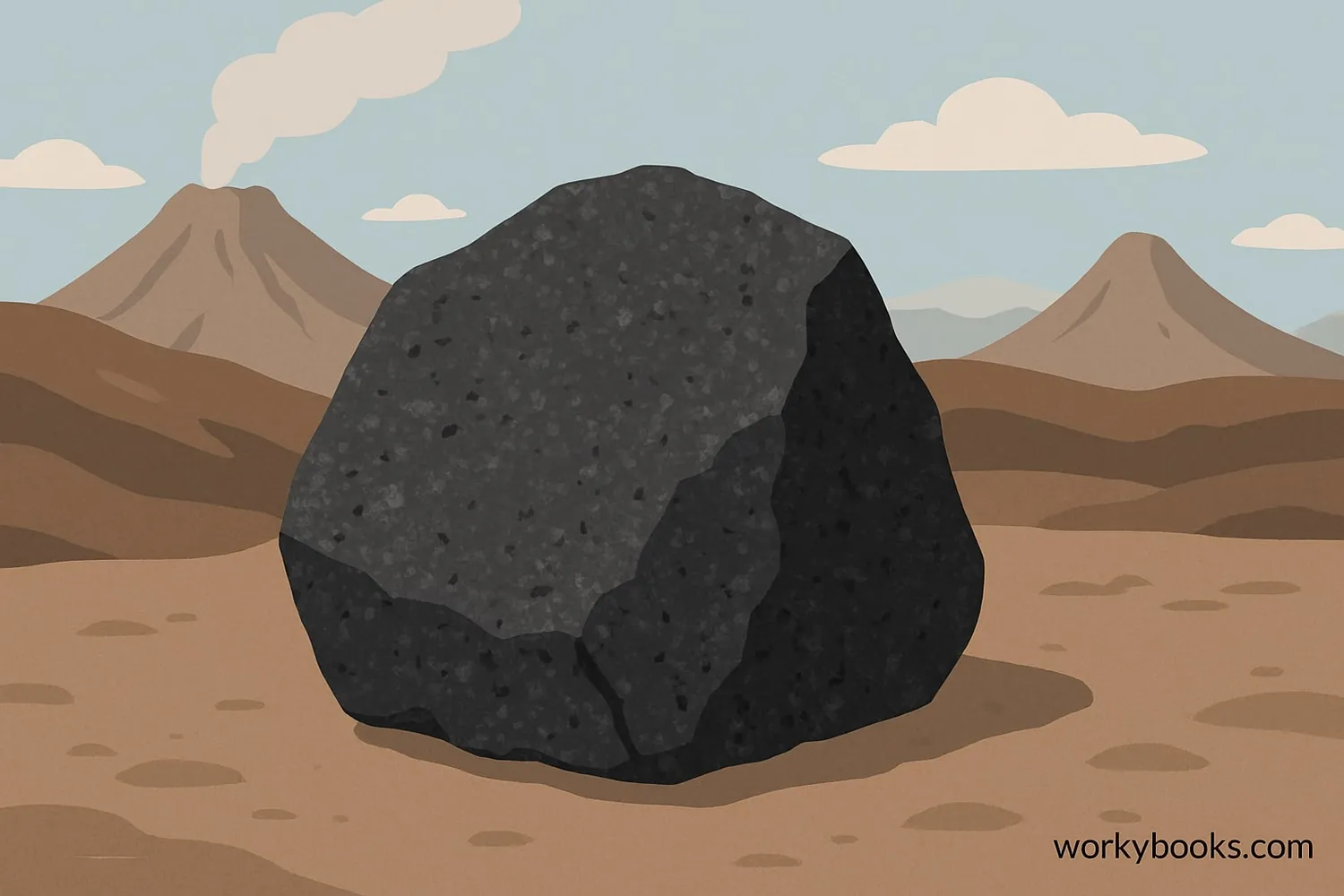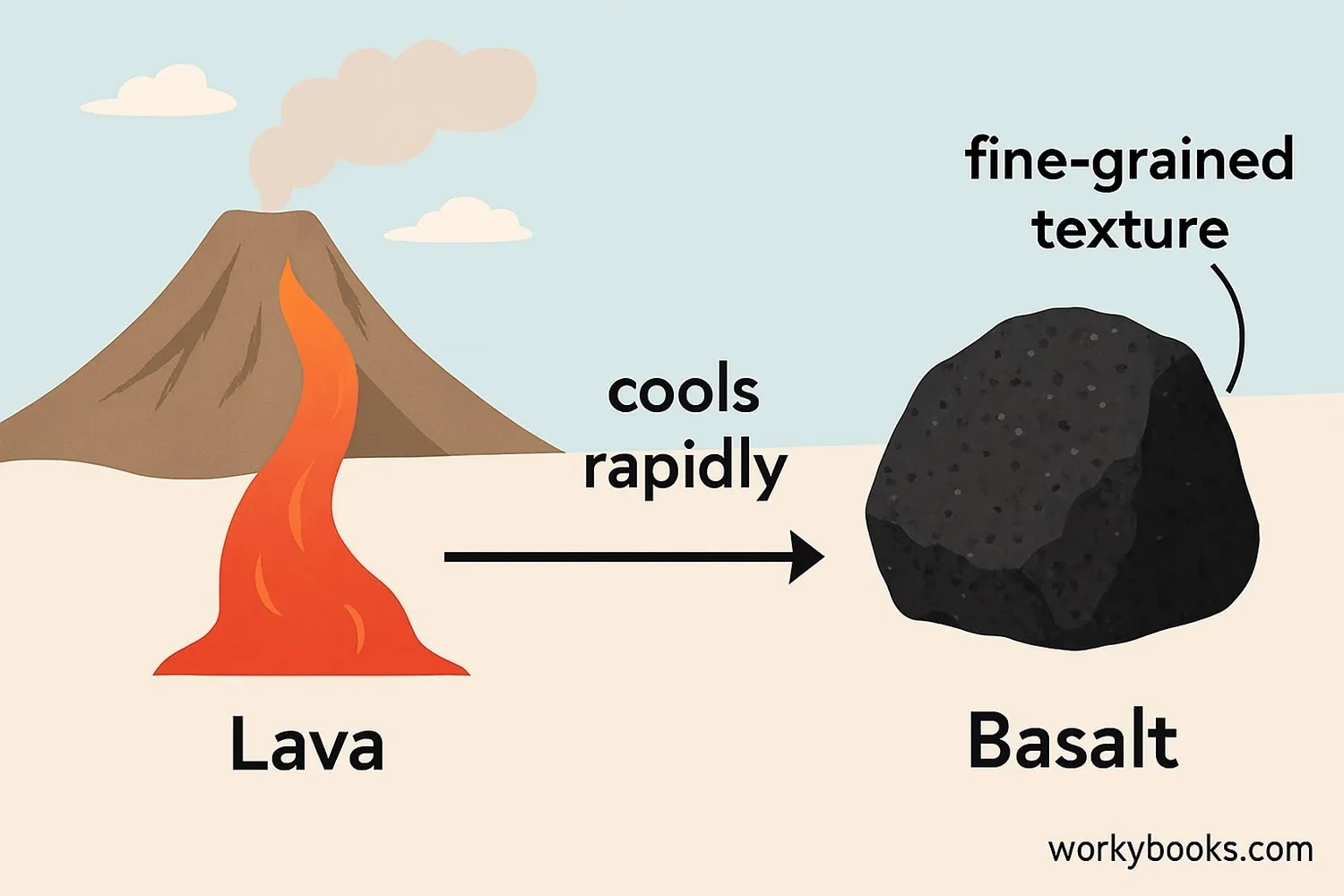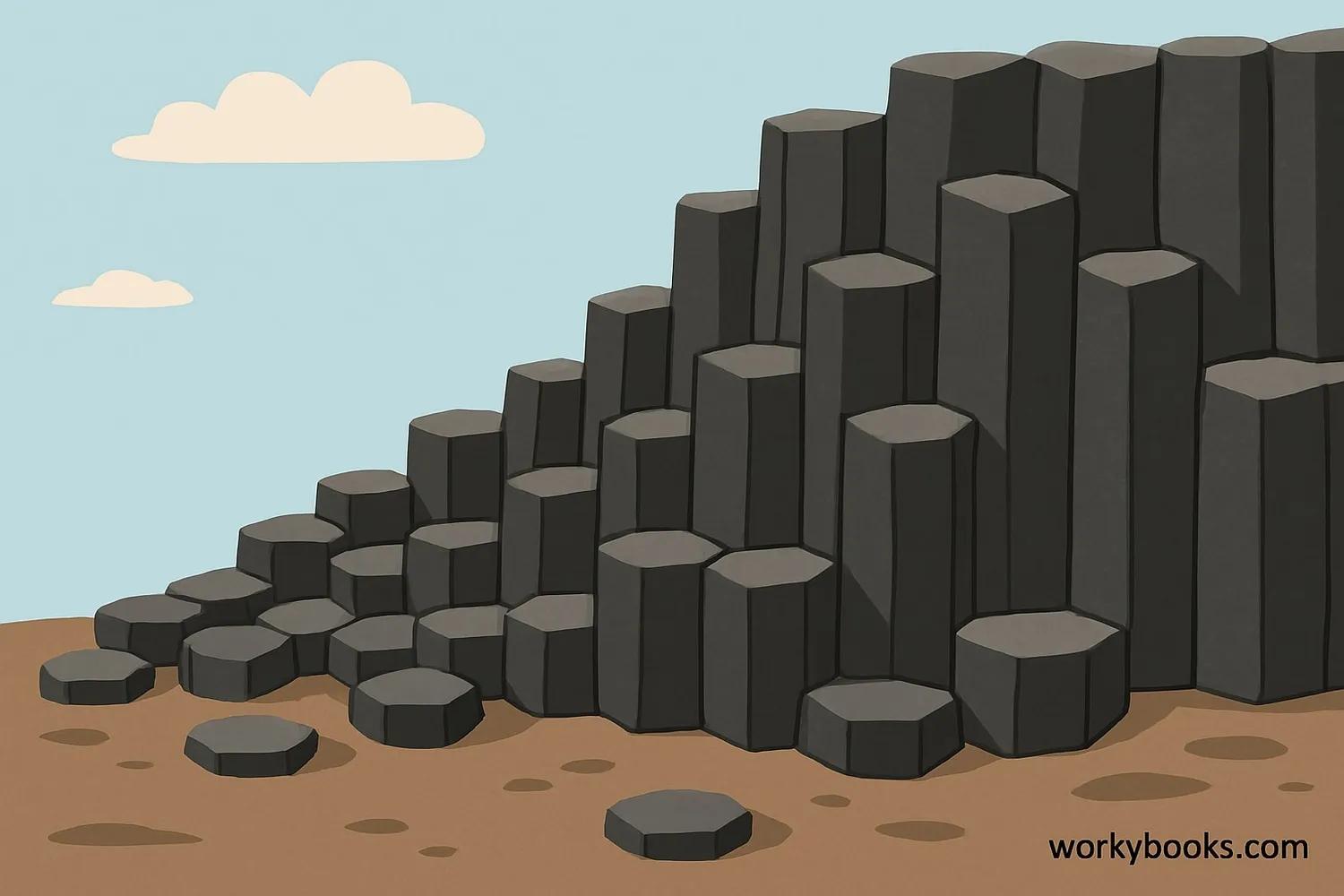Basalt Rock - Definition, Examples, Quiz, FAQ, Trivia
Discover the volcanic rock that forms most of the Earth's ocean floor
What is Basalt?

Basalt is a dark-colored, fine-grained igneous rock that forms from the rapid cooling of lava. It's one of the most common rock types on Earth, making up most of the ocean floor and many volcanic islands like Hawaii and Iceland.
Think of basalt as the "default setting" for volcanic rocks! When volcanoes erupt, the lava that flows out often cools to become basalt. It's usually dark gray to black in color because it contains minerals rich in iron and magnesium.
Rock Fact!
Over 90% of all volcanic rock on Earth is basalt! It's the most abundant rock in the Earth's crust.
How Basalt Forms

Basalt forms through volcanic activity when lava from volcanoes or fissures cools and solidifies. Here's how this rock-forming process works:
Melting
Rocks melt deep within the Earth's mantle
Eruption
Molten rock (magma) rises to the surface through volcanoes
Lava Flow
Magma becomes lava when it reaches the surface
Cooling
Lava cools quickly when exposed to air or water
Solidification
The cooled lava becomes solid basalt rock
Basalt is an extrusive igneous rock, which means it forms on the Earth's surface. Because it cools quickly, the mineral crystals in basalt are very small, giving it a fine-grained texture. Sometimes, when thick lava flows cool slowly, larger crystals can form.
Ocean Floor Fact!
Almost the entire ocean floor is made of basalt! The oceanic crust is primarily basalt that formed at mid-ocean ridges where tectonic plates are moving apart.
Characteristics of Basalt

Basalt has several distinctive characteristics that help geologists identify it:
Color
Dark gray to black, sometimes with greenish or reddish tints
Texture
Fine-grained due to rapid cooling of lava at the surface
Columnar Jointing
Often forms hexagonal columns as it cools and contracts
Basalt is composed mainly of plagioclase feldspar and pyroxene minerals, with smaller amounts of olivine and other minerals. It's classified as a mafic rock, which means it's rich in magnesium and iron.
One of the most fascinating features of basalt is columnar jointing - when thick lava flows cool, they often contract and form hexagonal columns that look like they were made by humans!
Mineral Composition
Basalt typically contains about 45-55% silica, which is less than other volcanic rocks like granite. This makes it relatively fluid when molten, allowing it to flow long distances.
Basalt Rock Quiz
Test your knowledge about basalt with this quiz! Answer all 5 questions to see how much you've learned.
Frequently Asked Questions
Here are answers to some common questions about basalt:
Rock Trivia
Discover some amazing facts about basalt!
Ocean Dominance
Basalt makes up about 90% of all volcanic rock on Earth! The ocean floor is almost entirely basalt, covering about 70% of Earth's surface.
Ancient Uses
Many ancient civilizations used basalt for tools, grinding stones, and construction. The Egyptians used basalt for statues and the Romans for road construction.
Lunar Basalt
The dark areas on the Moon (called maria) are massive basalt plains formed by ancient volcanic eruptions between 3-4 billion years ago.
Giant Formations
The Columbia River Basalt Group in the northwestern United States contains enough basalt to cover the entire state of California with a layer over 100 feet thick!


